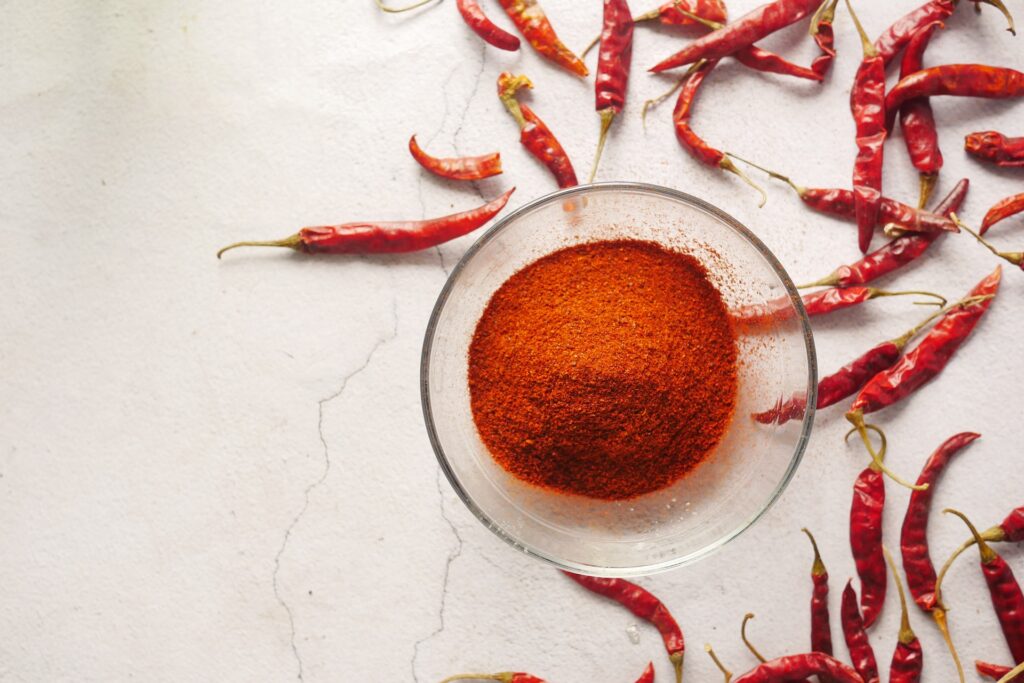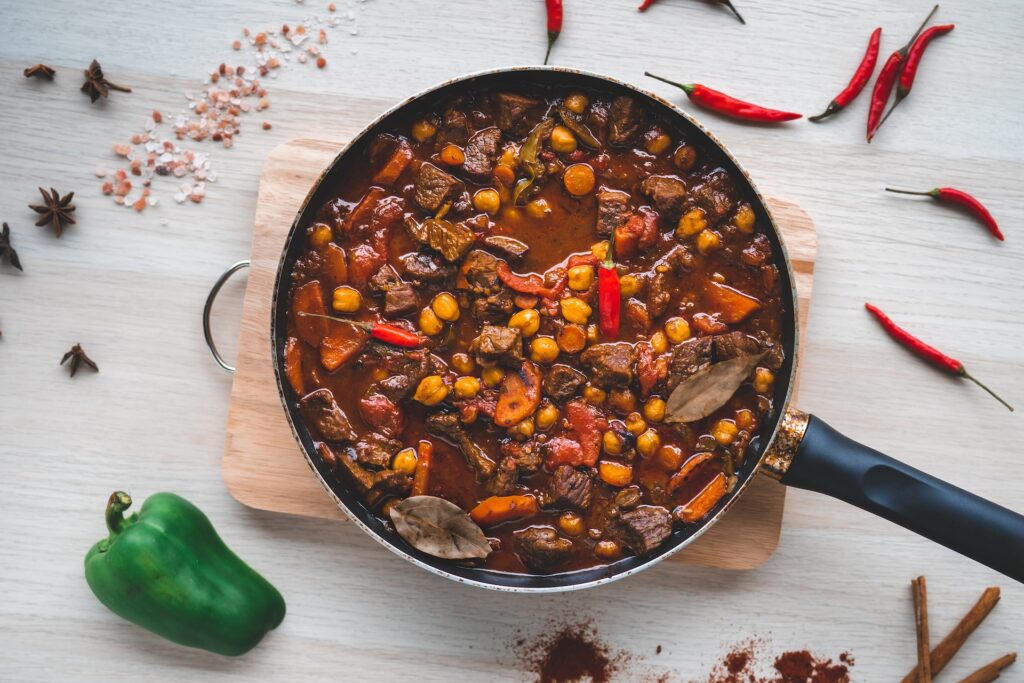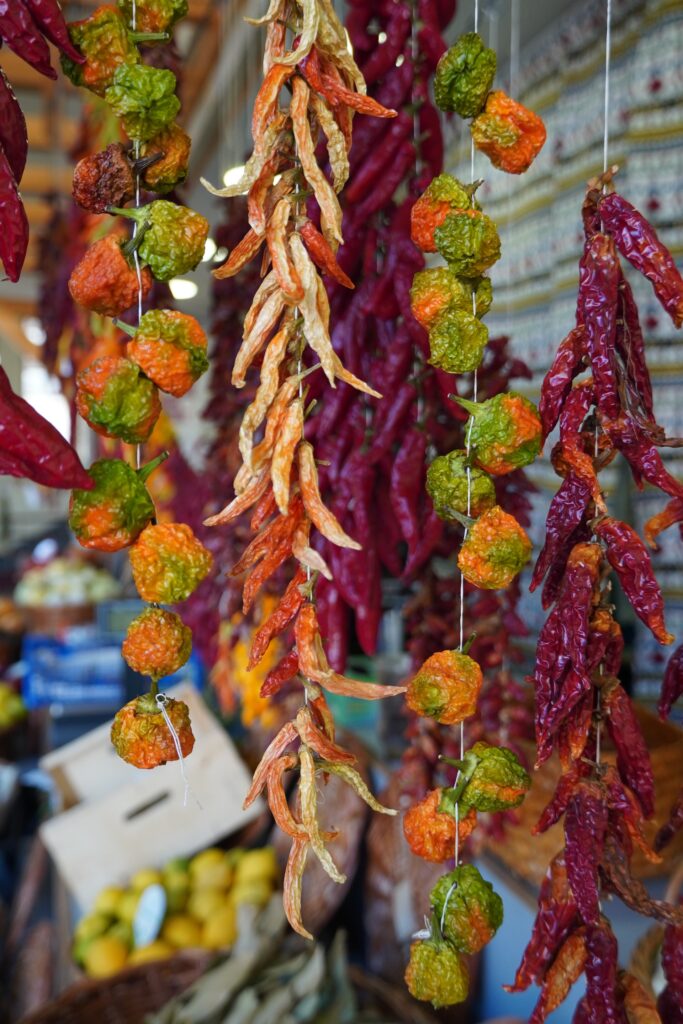Chilies, the vibrant, fiery gems that spice up cuisines worldwide, have a long and intriguing history. These humble peppers have journeyed across continents, transforming dishes and tantalizing taste buds with their bold flavors and heat. In this article, we’ll delve into the fascinating world of chilies, with a special focus on their unparalleled culinary impact.
The Origin of Chili Peppers
The chili pepper’s story begins in the Americas, specifically in regions of what are now Mexico and Central America. Native to this region, chilies have been cultivated for thousands of years. The oldest known domesticated chili pepper seeds were found in Mexico and date back to around 6,000 years ago.
Chilies quickly became an integral part of the Native American diet, offering a spicy kick to their meals. Interestingly, chili peppers’ heat acted as a natural preservative, helping to extend the shelf life of food in hot and humid climates.
The Chili’s Global Spread
Chilies made their way to Europe through Christopher Columbus and his voyages to the New World. By the early 16th century, chilies had become a staple in European cuisine, with the Portuguese introducing them to India and Southeast Asia. From there, they continued their journey to Africa, adding their fiery touch to a multitude of regional dishes.
In the Americas, chilies maintained their central role in indigenous cuisine, eventually becoming integral to dishes like Mexican mole and Caribbean jerk seasoning.
Cultural Significance of Chilies
Throughout history, chilies have played a significant role in many cultures, going beyond mere culinary use. They’ve been used for medicinal purposes, as currency, and even in religious ceremonies.
1. Medicinal Uses:
Chilies contain capsaicin, the compound responsible for their heat. Capsaicin is known to have various health benefits, including pain relief, anti-inflammatory properties, and potential weight loss benefits. In traditional medicine, chilies have been used to treat ailments ranging from arthritis to digestive issues.
2. Currency:
Chilies were once used as a form of currency. The ancient Aztecs used them as a trading commodity, and, at times, they were even used to pay taxes. Chilies were so valuable that they could be used to measure a person’s wealth.
3. Religious Rituals:
In some cultures, chilies have had religious significance. In Hinduism, they are associated with deities like Hanuman, while in other belief systems, they are believed to have protective properties against evil spirits.
The Science of Spice: What Makes Chilies Hot?
The heat of chili peppers comes from capsaicinoids, a group of compounds found in the fruit’s placental tissue. Capsaicin, in particular, is responsible for the fiery sensation we experience when consuming chilies. When capsaicin interacts with receptors on our tongue and in our mouths, it sends signals to the brain that we interpret as heat or spiciness.
The Scoville scale is used to measure the heat level of chilies. The heat is determined by diluting the chili’s extract until it is no longer perceived as spicy by a panel of tasters. Bell peppers have a Scoville rating of 0, while the Carolina Reaper, one of the hottest chilies in the world, can exceed 2.2 million Scoville Heat Units (SHU).
Chilies’ Role in Cuisine: From Mild to Wild
Chilies have diverse culinary uses and are employed in various forms, each adding a unique flavor and heat level to dishes.
1. Fresh Chilies:
Whole fresh chilies, such as jalapeños, serranos, and habaneros, are widely used in salsas, stir-fries, and salads. Their heat and flavor can vary significantly, allowing for a wide range of taste experiences.
2. Dried Chilies:
Dried chilies, like ancho, guajillo, and chipotle, offer a different depth of flavor compared to their fresh counterparts. They are often used in Mexican and Southwestern American cuisine, imparting smoky and earthy notes.
3. Chili Powder:

Chili powder is a blend of dried, ground chilies and other spices. It is an essential ingredient in many Mexican and Tex-Mex dishes, from chili con carne to enchiladas.
4. Chili Paste and Sauces:
Chili paste and sauces, like Sriracha and harissa, are popular condiments that add heat and depth of flavor to various dishes. These sauces have gained global popularity and are essential ingredients in many contemporary fusion cuisines.
5. Curry Pastes:
In Indian and Thai cuisines, chili-based pastes are crucial components in curries. They contribute to the rich and complex flavor profiles of these beloved dishes.
6. Pickled Chilies:
Pickled chilies, often found in Asian cuisines, provide a balance of heat and acidity. They are typically served as a side condiment, accompanying noodle dishes and street food.
The Culinary Impact of Chilies
Chilies have an incredible capacity to enhance the flavor of dishes, making them an essential ingredient in countless world cuisines.

1. Balancing Flavor:
Chilies can accentuate the flavor of other ingredients by adding depth and complexity to a dish. The heat of chilies can complement the sweetness of fruits, the richness of meats, and the freshness of herbs and vegetables.
2. Cultural Identity:
Chilies are integral to the identity of many cuisines. In regions like Mexico, India, and Thailand, chilies are fundamental to local dishes, defining the culinary identity of these regions. The use of chilies in traditional recipes connects the past with the present, preserving culinary traditions that have been passed down through generations.
3. Versatility:
One of the great attributes of chilies is their versatility. They can be the star of a dish or a subtle background note. Chilies can be used to create salsas, marinades, and rubs, adding their unique character to a wide range of foods. Whether it’s a spicy salsa that elevates a taco, a fiery curry that engulfs your senses, or a hot sauce that brings wings to life, chilies find their place in various culinary applications.
4. Global Fusion:
In the modern culinary landscape, global fusion has become a prominent trend, and chilies play a crucial role in this culinary evolution. They bring together flavors and ingredients from different cuisines, creating exciting and harmonious fusions. A dash of chili-infused oil in an Italian pasta or a sprinkle of chili flakes on a traditional pizza is a testament to the versatility of these peppers.
5. Comfort and Celebration:
Chilies are not just about heat; they also offer comfort and celebration. Many cultures have comforting dishes, often associated with home-cooked meals prepared by loved ones. Spicy stews, soups, and curries are often the centerpieces of family gatherings and celebratory feasts.
Chilies – A Global Culinary Treasure
Chilies are a global culinary treasure, elevating dishes and defining the flavors of cultures around the world. From Mexico’s sizzling salsas to Thailand’s fiery curries, the culinary impact of chilies is undeniable. They add a spark of excitement to our plates and have the power to transport us on a flavorful journey across borders and through

